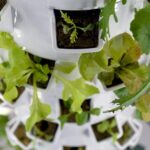In a world where every step can be traced, GPS tracking for employees feels like the apex of surveillance. It’s a tool that can skyrocket productivity, yet it’s ensnared in a web of trust issues and privacy concerns. It’s clear that striking a balance between oversight and trust is not only crucial, but also incredibly delicate. So, how might businesses navigate this double-edged sword without severing the ties of trust with their employees? Stay with us to explore tracking employees with gps further.
Key Takeaways
- GPS tracking increases operational efficiency but may engender mistrust if misused.
- Striking a balance demands transparency and appropriate use of tracking data.
- Constant surveillance can lead to legal and reputational risks if not managed properly.
- Compliance with privacy laws and regulations is crucial in implementing GPS tracking.
Understanding Employee GPS Tracking
In the realm of business operations, employee GPS tracking serves as a pivotal tool for monitoring workforce movement, offering real-time data about employee location and productivity. It’s an innovative technology that uses the Global Positioning System to determine the precise location of a person, vehicle, or other asset to which it is attached. It’s primarily employed by businesses to keep tabs on their employees, especially those in field operations, delivery services, and transportation.
Employee GPS tracking isn’t about spying on employees, as some might believe. It’s about enhancing operational efficiency and ensuring safety standards. Companies can monitor their employees’ progress on assigned tasks, track their routes, and even manage business resources more efficiently. It can also be a life-saver in emergencies, as it allows companies to locate their employees instantly.
However, it’s crucial to balance the use of this technology with respect for employees’ privacy. The implementation of GPS tracking in the workplace should be governed by clear policies, and employees should be informed about its purpose, benefits, and limitations. Misuse of this technology can lead to distrust and legal issues. Therefore, it’s vital to strike a balance between oversight and trust.
Benefits of GPS in Workplace
Navigating the benefits of GPS tracking in the workplace, it’s clear that this system offers several significant advantages for both employers and employees. Most notably, it increases efficiency. With accurate data on employees’ locations, companies can better manage tasks, allocate resources, and minimize downtime. It’s a way to ensure the right person is in the right place at the right time.
It’s worth noting that GPS tracking also promotes safety. For businesses with mobile workforces, such as delivery services or construction companies, tracking can provide valuable real-time information. This ensures that employees are safe and can quickly receive aid in emergency situations.
Additionally, GPS helps to validate work hours and reduce disputes over overtime or time spent on tasks. It provides an accurate, unbiased record of where and when an employee has worked.
Finally, GPS tracking can be a tool for improving customer service. Knowing an employee’s precise location enables businesses to provide customers with accurate updates, enhancing transparency and building trust.
Thus, GPS tracking isn’t just about oversight; it’s a versatile tool that can help businesses flourish in various ways.
Potential Drawbacks of Employee Monitoring
While GPS tracking offers numerous advantages, it’s crucial to consider potential drawbacks associated with employee monitoring. Constant surveillance may breed a culture of mistrust, as employees might feel their privacy is being invaded. This can lead to lowered morale, decreased job satisfaction, and a potential increase in turnover rates.
Furthermore, the misuse of GPS tracking data can lead to legal issues. If employees feel their privacy rights have been violated, they may decide to take legal action against the company, leading to costly legal battles and potential damage to the company’s reputation.
There’s also the risk of reliance on technology over human judgment. GPS tracking can’t capture the nuances of employee productivity and engagement. Over-reliance on it may result in overlooking the contributions of employees who may not be physically present but are still productive.
Lastly, the implementation of GPS tracking systems can be costly. Not only are there the initial setup costs, but also ongoing maintenance and update costs. Additionally, training staff to use these systems effectively is another expense that organizations must consider.
Striking Balance: Oversight Vs Trust
Balancing the need for employee oversight with fostering trust is a delicate task, one that requires thoughtful consideration of the potential drawbacks and benefits of GPS tracking. When properly implemented, GPS technologies can provide valuable insights into employee productivity and efficiency. However, there’s a fine line to tread between useful monitoring and intrusive surveillance.
To strike this balance, employers must consider the nature of the work, the working environment, and their employees’ comfort levels. They must be transparent about the use of GPS tracking and its purposes. If employees understand the reasons for monitoring, they’re likelier to accept it as a necessary part of their job, rather than an invasion of privacy.
It’s also crucial for employers to ensure the data collected is used appropriately. This can help maintain trust between the employer and employees. They mustn’t abuse the monitoring system by tracking employees during non-working hours, for example.
Striking the right balance between oversight and trust when using GPS tracking isn’t simple. However, with careful consideration and clear communication, it’s possible to use the technology in a way that benefits both the employer and the employees.
Legal Considerations in GPS Tracking
Often overlooked, legal considerations play a critical role in implementing GPS tracking for employees. While GPS tracking can provide valuable data about an employee’s location and productivity, it’s essential to ensure it doesn’t infringe on their rights.
Firstly, employers must be aware of the privacy laws in their jurisdiction. In some areas, it’s illegal to track employees without their knowledge and consent. Therefore, it’s crucial to inform employees about the GPS tracking policy, its purpose, and how the data will be used.
Secondly, it’s important to consider the implications of data protection regulations. Companies must ensure they’re storing and processing employee data securely to avoid hefty fines and reputational damage.
Conclusion
In conclusion, GPS tracking for employees can be an excellent tool for efficiency and safety, but it’s crucial to balance this with trust and privacy. Employers must clearly communicate the reasons for tracking, address concerns, and ensure legality. Striking the right balance allows companies to reap the benefits of technology without eroding the essential trust between employers and employees. It’s not just about monitoring, but fostering a healthy, productive work environment.












